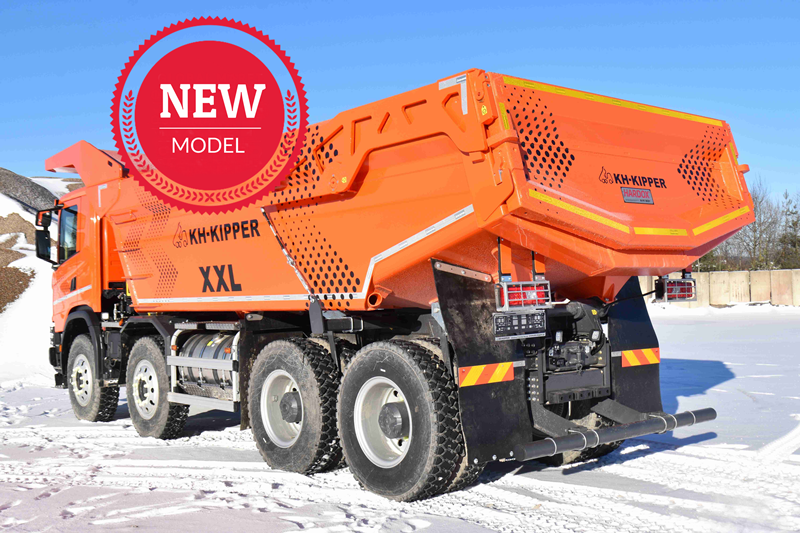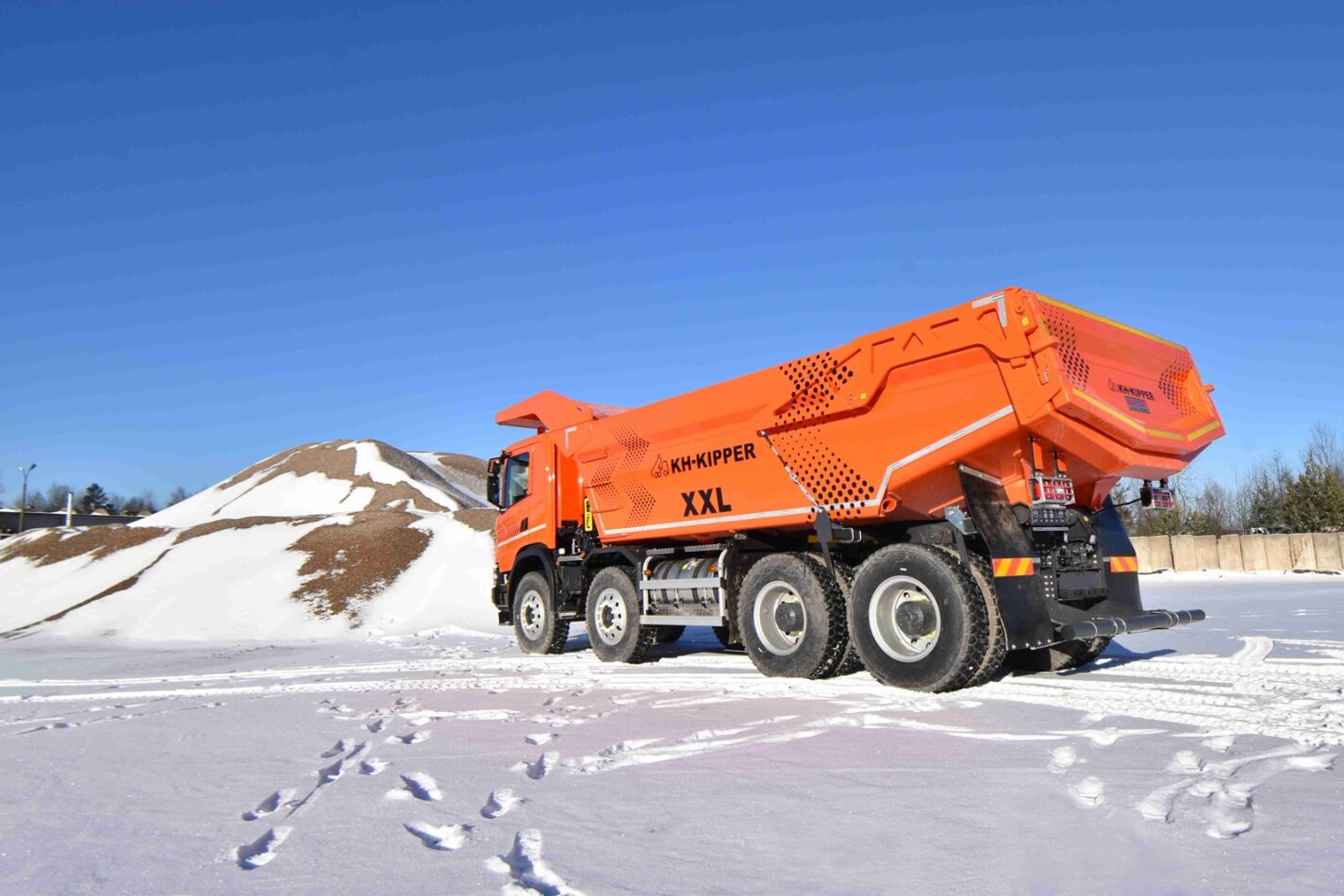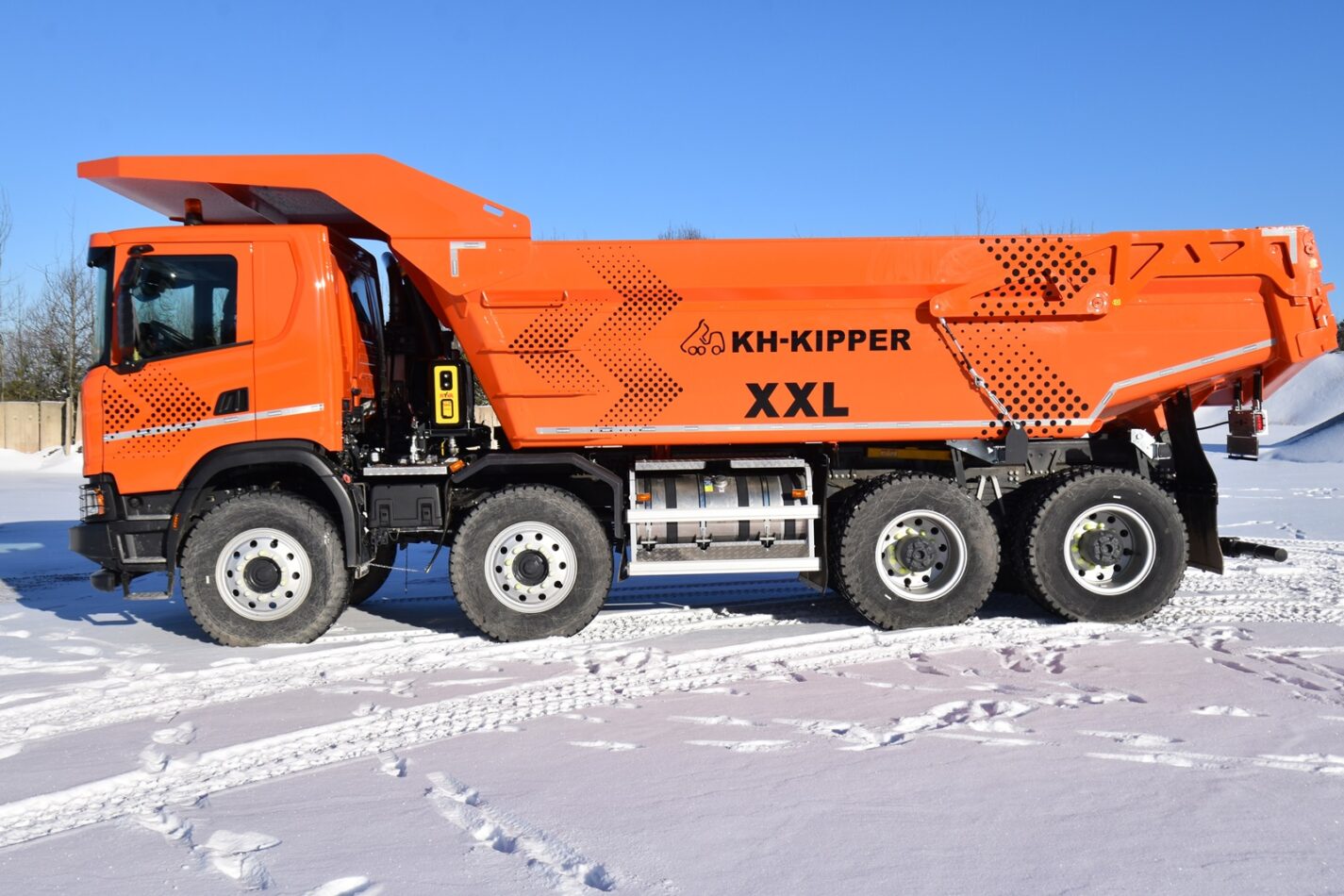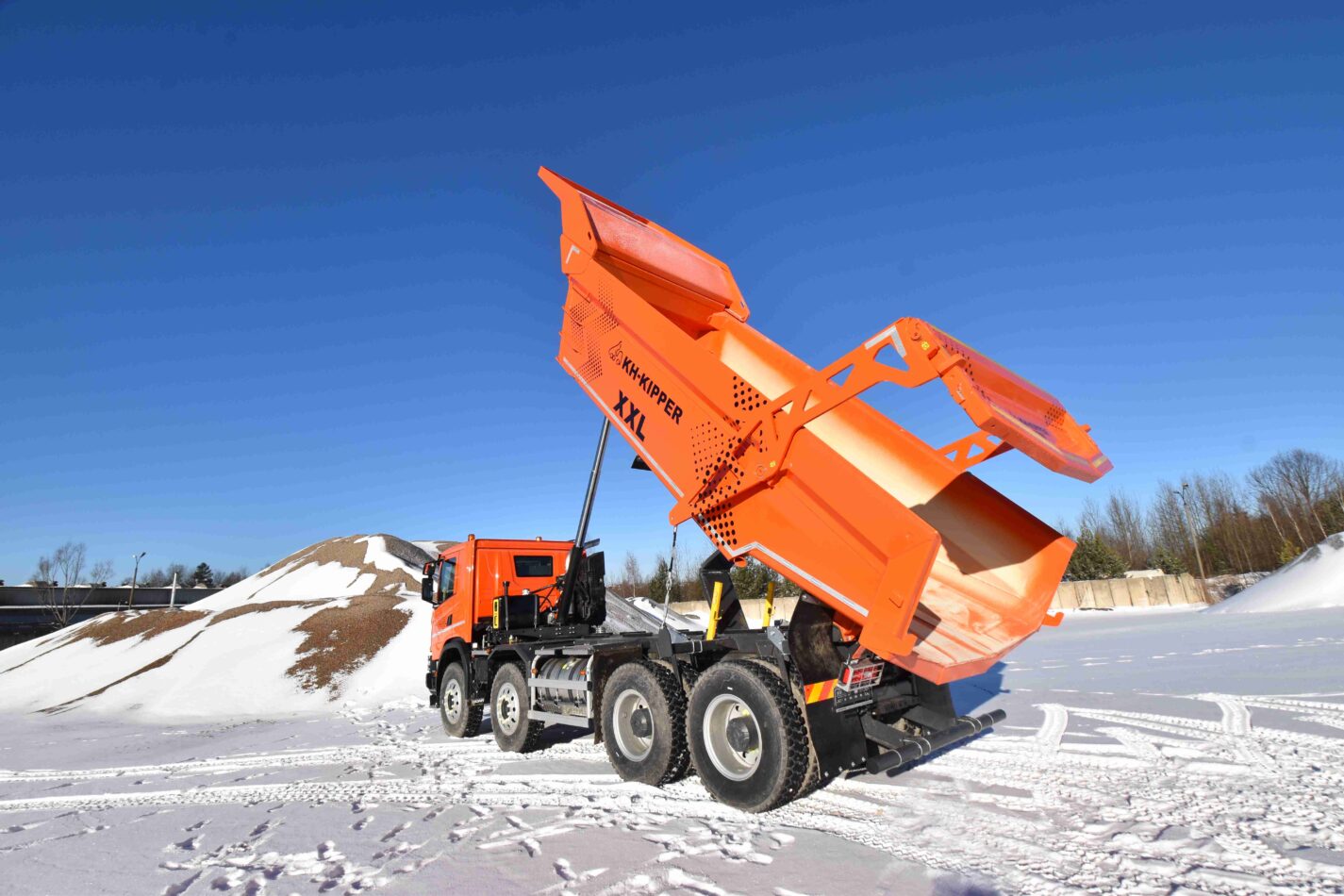W1RB mining body – complex transport solution

The equipment operating in extreme conditions in open pit mines must be robust. Failure-free operation and the longest possible operating period are necessary to ensure the productivity of technological processes and appropriate implementation time. The tipper with W1RB body will cope with even the most demanding tasks. It was designed to transport the output from the extraction site to the crusher as efficiently as possible. 24 hours a day, 7 days a week, 365 days a year.
EFFICIENCY
An innovative design using the properties of HARDOX 500 TUF steel produced by the Swedish steelworks SSAB and a 4-times smaller number of welds guarantee exceptional wear resistance, hardness and impact strength as well as ensure a maximum long service life. The low empty weight of the body allows you to reduce operating costs, including fuel consumption, and increases productivity.
The HYVA hydraulic cylinder allows to lift and lower the body within the optimal 30-35 s. With repeated cycles, this allows the saved time to be used for a larger number of cycles, and thus to transport more load. The hydraulic system is complemented by the HYVA SMART system which monitors each tipping cycle, supporting the driver in making better decisions, improving safety and efficiency before and during tipping operations.
SAFETY
Safety is important in everything we do. This also applies to a workplace such as an open-pit mine. One of the functions of the HYVA SMART system is the ability to view the position of the vehicle in relation to the ground, which allows you to operate the tipper in such a way that you can empty the body without risking the truck tipping over.
A huge convenience when driving, considering the size of the tipper truck and its huge roof, is the Brigade camera placed in the rear part under the body, which shows the view from the rear. This also increases the driver’s safety and helps when driving up to the crusher’s hopper. AI cameras are the next generation of active blind spot detection. Using artificial intelligence, the cameras detect and recognize a human figure in a defined area and warn the driver visually and/or acoustically of a possible collision.
The roof over the cabin, which is an extension of the front wall of the body, is up to 3 m wide, thanks to which it effectively protects the cabin against impacts of rock material during loading, but also when driving down a steep slope, when the load at the very top may slide towards the cabin.
WORKING COMFORT
Working comfort affects not only safety, but also efficiency. The W1RB tipping body meets even the most demanding production needs and was designed specifically for the conditions found in open-pit mines. This is high-performance equipment that allows efficient loading with a bucket of any volume, safe unloading in difficult and muddy terrain, as well as trouble-free movement in confined spaces, including tight corners of technological roads.
The KH-KIPPER body is set lower, and therefore the upper edge of the side walls is lower, which facilitates loading and reduces the risk of impacts on the sides. The body also has a more symmetrical shape compared to an articulated dump truck, and its width of 3 m at the top makes it easier to load with a larger bucket.
The body is closed with the tailgate which is raised to allow large rock fragments to fall out. The rear wall opens automatically during tipping thanks to the use of an external rope system. The tailgate opening mechanism starts working when the body starts to lift.
CO2 REDUCTION
Minimizing the negative impact on the environment is one of the most important tasks of modern raw material mining.
Thanks to the use of high-quality materials for the production of the body and its durable construction, the tipper remains in operation longer, which translates into a lower impact on the natural environment than purchasing new equipment. A lighter body transports more load, saves fuel and increases productivity. Once the chassis is out of use, the body itself may be suitable for reuse on a new chassis.
Thanks to its lightweight body, the tipper transports a larger amount of load which leads to a reduction in fuel consumption, which is a non-renewable energy source. An efficient transport system is the basis for sustainable development.
The heat of exhaust gases is used to heat the floor and walls of the body in order to prevent the material from freezing inside.








